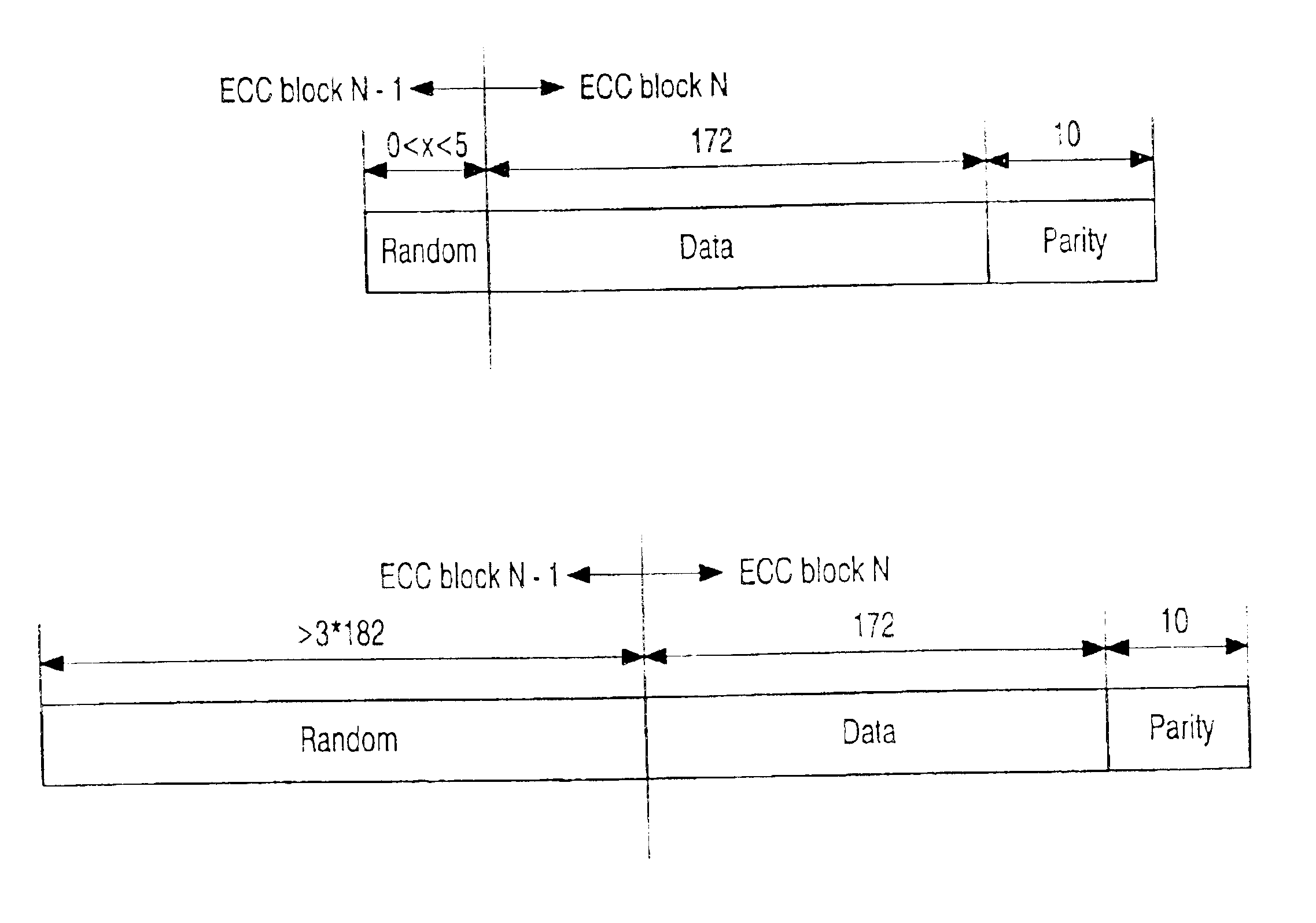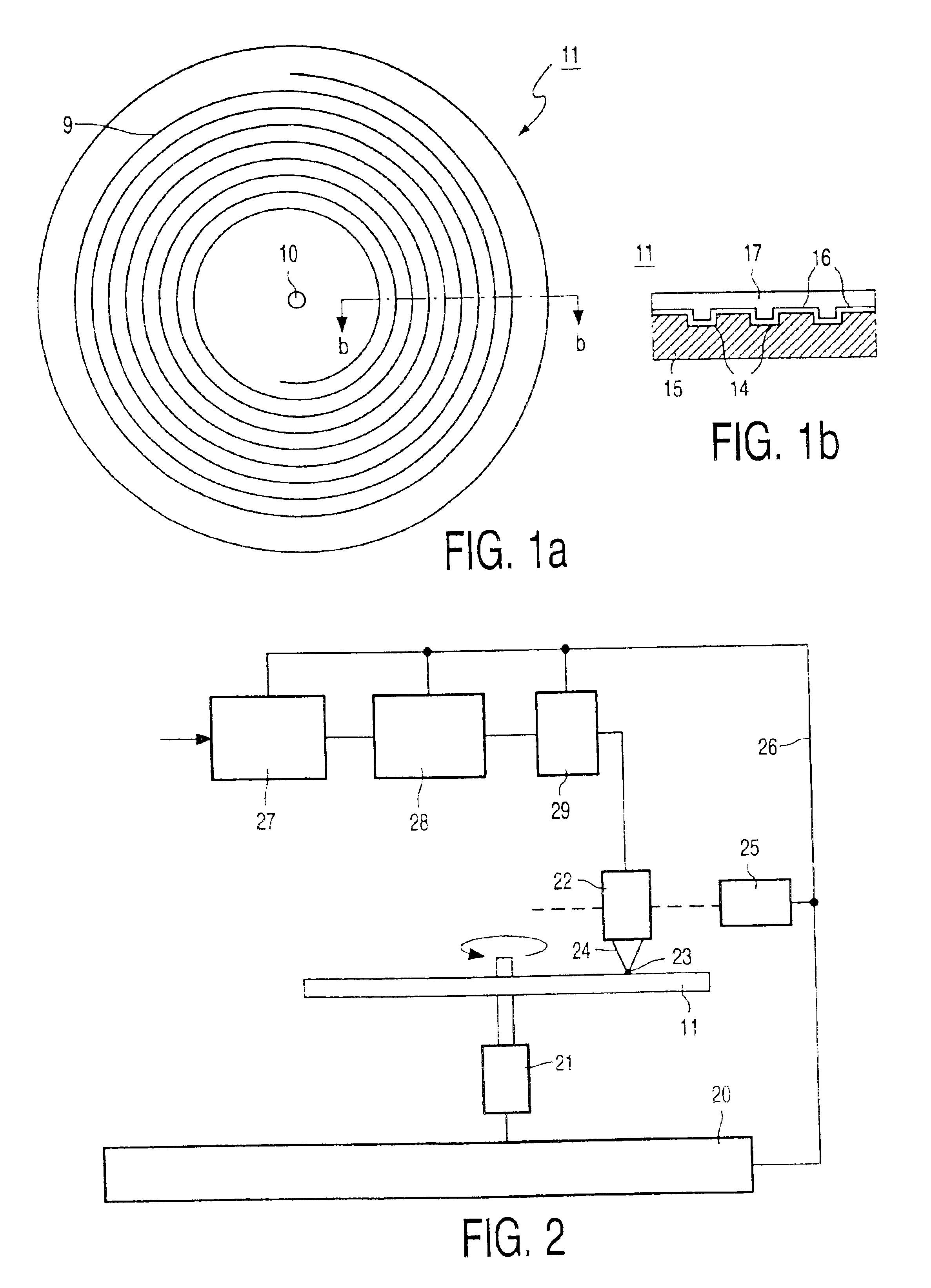Method and device for recording information in units
a technology of information and unit, applied in the field of method and device for recording information in units, can solve the problems of hardly being able to start recording process, decoding will be confronted with a shift of symbol boundary, damaged modulated signal at the first location, etc., and achieve the effect of preventing disturbing the value of read signal and low error number
- Summary
- Abstract
- Description
- Claims
- Application Information
AI Technical Summary
Benefits of technology
Problems solved by technology
Method used
Image
Examples
Embodiment Construction
[0027]FIG. 1a shows a disc-shaped record carrier 11 having a track 9 and a central hole 10. The track 9 is arranged in accordance with a spiral pattern of turns, constituting substantially parallel tracks, on an information layer. The record carrier may be optically readable, called an optical disc, and has an information layer of a recordable type. Examples of a recordable disc are the CD-R and CD-RW, and writable versions of DVD, such as DVD+RW. The information is represented on the information layer by recording optically detectable marks along the track, e.g., crystalline or amorphous marks in phase change material. The track 9 on the recordable type of record carrier is indicated by a pre-embossed track structure provided during manufacture of the blank record carrier. The track structure is constituted, for example, by a pre-groove 14 which enables a read / write head to follow the track during scanning. The track structure comprises position information, e.g., addresses, for ir...
PUM
| Property | Measurement | Unit |
|---|---|---|
| distance | aaaaa | aaaaa |
| length | aaaaa | aaaaa |
| predefined distance | aaaaa | aaaaa |
Abstract
Description
Claims
Application Information
 Login to View More
Login to View More - R&D
- Intellectual Property
- Life Sciences
- Materials
- Tech Scout
- Unparalleled Data Quality
- Higher Quality Content
- 60% Fewer Hallucinations
Browse by: Latest US Patents, China's latest patents, Technical Efficacy Thesaurus, Application Domain, Technology Topic, Popular Technical Reports.
© 2025 PatSnap. All rights reserved.Legal|Privacy policy|Modern Slavery Act Transparency Statement|Sitemap|About US| Contact US: help@patsnap.com



